 |
 |
 Loading Page. Please Wait... Loading Page. Please Wait... 
|
General Site Information  | |
|---|---|
| Domain: | ragpiano.com |
| Established: | June 1997 |
| Provider: | iPowerWeb |
| Author: | All content written, coded, illustrated, maintained and posted by Bill Edwards |
| Browser Information | |
| Browser: | |
| Cookies: | |
| Language: | |


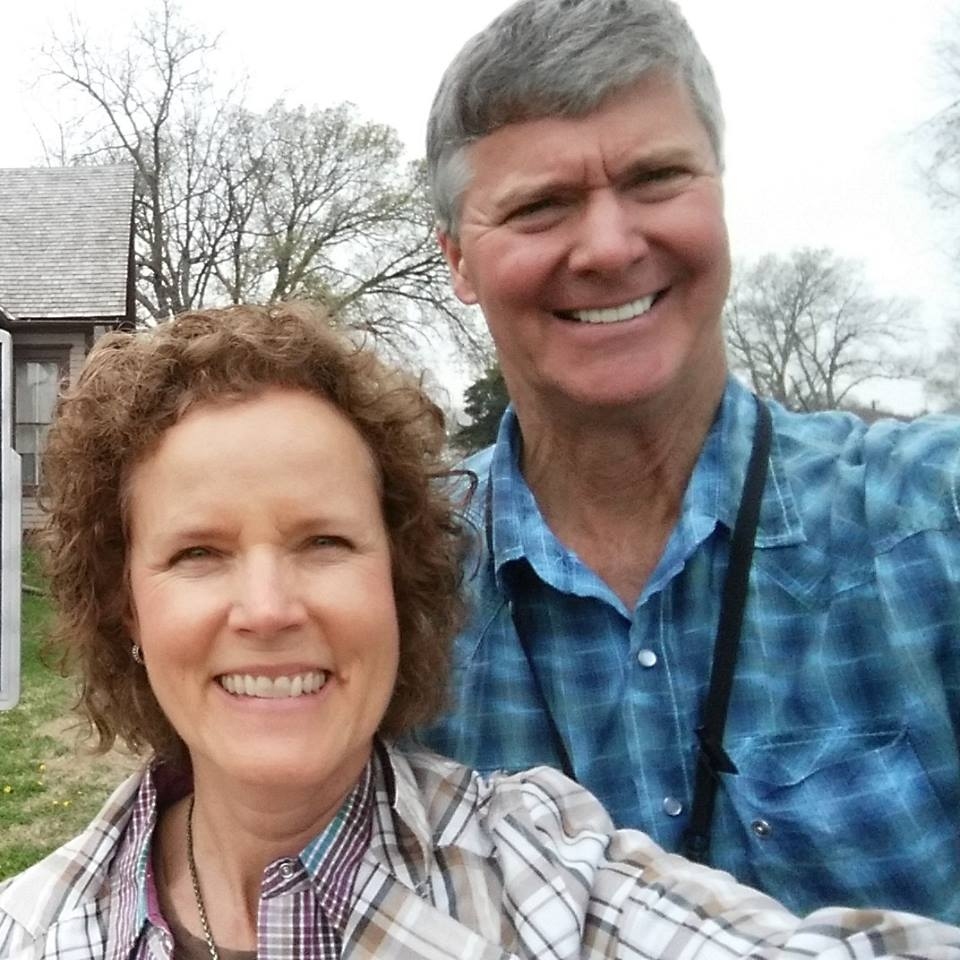 If you are wandering by, particularly on late summer and fall weekends, you can always check to see if somebody is there to let you sample some of the delicious fruit Mincer Orchard has to offer, and perhaps be regaled with some history, and if you hit at the right time, incredible feats of piano note assaults from Marty's classic upright piano. You can also continue down the road to Waubonsie State Park with its scenic vistas, user-friendly rustic campground, picnic grounds, and miles of hiking and equestrian trails.
If you are wandering by, particularly on late summer and fall weekends, you can always check to see if somebody is there to let you sample some of the delicious fruit Mincer Orchard has to offer, and perhaps be regaled with some history, and if you hit at the right time, incredible feats of piano note assaults from Marty's classic upright piano. You can also continue down the road to Waubonsie State Park with its scenic vistas, user-friendly rustic campground, picnic grounds, and miles of hiking and equestrian trails.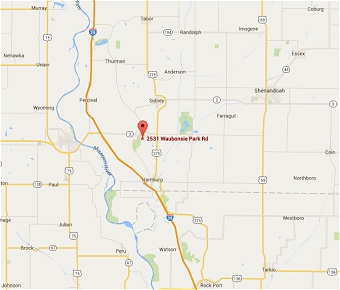 To get to Mincer Orchard and Waubonsie State Park from Interstate 29 Southbound, take exit 10, then turn left and proceed eastbound on IA-2 for 5.5 miles. Stop and take pictures of the cows if you dare. Turn right on CR-L48 and you will see the main building on your left with the state park ahead.
To get to Mincer Orchard and Waubonsie State Park from Interstate 29 Southbound, take exit 10, then turn left and proceed eastbound on IA-2 for 5.5 miles. Stop and take pictures of the cows if you dare. Turn right on CR-L48 and you will see the main building on your left with the state park ahead.| HOW I SAVED MY APPLE CROP | ||
|---|---|---|
|
Protecting an orchard from frosts on a still night, even with a very low tempera- ture, is comparatively easy compared to protecting it during several days of freezing weather, sleet, and hail, and with a very high gale blowing. Of our one thousand four hundred bearing apple-trees about eight hundred and fifty or nine hundred were in the block that we had protected with a few over a thousand of the small-size crude-oil-burning orchard-heaters. The oil-pot we used was selected after a most careful investigation as being the only one that fulfilled all the conditions. Part of the block of trees that was protected were on high ground and part were on low ground. No apparent difference was noted in the results. At this date, May 12, our apple and peach orchards that were not protected are bare of fruit. One orchard of seven acres, 350 feet above the others, [which] never has failed before, looks as if a severe fire had gone through the trees. If the ground was not cultivated it would be difficult to believe fire had not caused the result. On the orchard that was protected there is a prospect for a large per cent of a full crop. There are about, three or four rows on the north and northwest sides that are very light, some having no apples at all. Had we placed a row of pots around the outside of the orchard we think we could have saved those trees also, because where a few pots were on the outside the apples are in good shape. In the middle of the protected block there are a few missing trees, and a pot was not placed where these trees were out, with a result that the foliage is burned (frozen) and no apples around these place. A large percentage of the trees have apples from the lower limbs to the tops of the trees. Some of the trees have no |
Written for the National Horticulturist by |
two-inch outlet was made and a two-inch galvanized pipe extended down the hill to a point where easy loading could be effected [sic]. We found a place on the switch-tracks where an entire car of oil could be unloaded from the bottom of the tank by gravity. We hauled the oil in tank-wagons of 200 gallons' capacity, which were unloaded into the tank by gravity. At the bottom of the hill our tank-wagons were again loaded by gravity, as shown in the accompanying photograph. This taking advantage of natural conditions enabled us to handle the oil in a rapid and convenient manner, and was one of the things that enabled us to meet the severe conditions—that of keeping the pots filled almost continuously for several days. After the tank-wagons were again loaded at the foot of the hill, the oil was distributed, in buckets holding about four gallons. From four to eight men filled the pots, as shown, taking several rows on each side of the tank-wagon as shown in the photograph. In lighting the pots we placed a few drops of gasolene [sic] upon the crude oil and either applied a torch or the burning end of the gasolene-[sic] can spout. We could not buy a satisfactory lighter. The can we used was one we designed for the purpose. It is absolutely non-explosive, and gave perfect results. From one to two drops to any quantity could be quickly placed upon the oil. In a high wind any arrangement that dropped a measured quantity would occasion the loss of valuable time, but by keeping the spout of the can on fire we saved the carrying of torches and gave a free hand to remove the lids from such of the pots as might be covered. The cans held one quart each, and it seldom took more than two quarts to light the bulk of the thousand pots. |
|
apples in the tops, and on these foliage is badly frozen. The high wind caused uneven heating. If we had the same experience to go through again we feel that we could save practically all the crop, for many con- ditions arose that were unexpected. It may be a long time before we have such hard conditions to meet again, and the results that we have secured have so encouraged us that we feel practically sure of saving a crop of apples every year from frost and even a freeze, provided the temperature does not go below 20 degrees. We would not have our friends think that it is an easy matter, and something that can be whipped in shape in a short time. We would far rather go through an entire season of spraying and packing than the two weeks we experienced during the cold weather. The season, being a month earlier than usual, made us hurry our preparations for we were pretty sure we would need the protection. Usually it is during the first part of May that the frosts kill the fruit, but this year it was nearer the first of April. We constructed a reinforced concrete reservoir holding about 16,000 gallons. The top reinforcement is shown in the cut. The arched steel sheets are bedded in the concrete. The walls are from four to six inches thick, and after being carefully pointed up and slushed with cement, were coated three times with hot asphaltum [sic]. Two four-inch pipes were placed in the top on the side next [to] the road. so that two wagons could unload at once. An eighteen-inch manhole was also placed in the top, so that the tank could be entered whenever necessary. The floor of the tank was sloped to one corner, from which a | ||
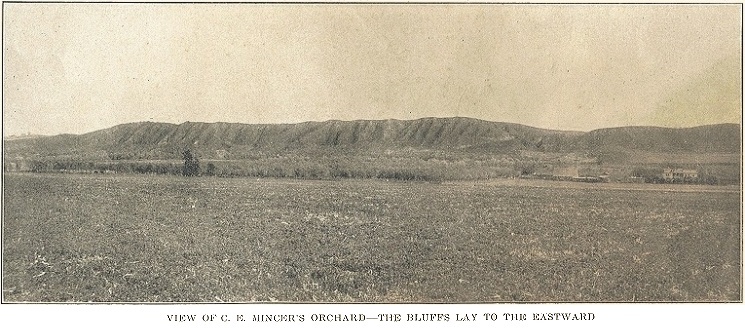 | ||
We intended to place the pots in the center of each four trees, hut we could not do this on account of getting between the rows with the spray-hose and the filling-tanks, so the pots were placed in the tree rows. We had a number of common ther- mometers placed at different parts of the orchard and outside of it. Another year we intend to buy the best thermometer obtainable. We intended to have an electric alarm, but the cold weather had passed before the apparatus arrived. We have a number of colony chicken-houses |
throughout the orchard, and those were used by the men as temporary quarters. We had an alarm-clock set for every thirty minutes, and at each time the temperature was noted. During [the] first part of our smudging we did not try to light the pots until the thermometer commenced to drop below thirty degrees. This was necessary because we could not locate our second car of oil, and were afraid to run out entirely. We lost some fruit by doing this, on the trees that were just opening in full bloom, because it is well known that a |
temperature of thirty degrees will kill the fertilizing power of the pollen-grains. If a period of twenty-four to thirty-six hours has elapsed after the trees have come to full bloom the fertilization is probably completed, and a temperature of thirty or even twenty-eight degrees will do very little damage. Hereafter we intend to light up immediately [when] the thermometer shows any sign of getting below thirty-two degrees, recorded on an accurate thermometer. Our trees that had been in full bloom several days have a good crop. |
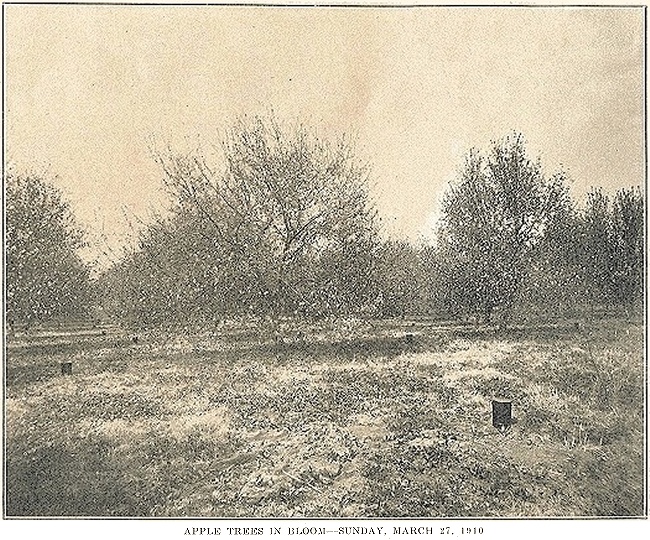 | ||
|
Our first night was Saturday, April 16. At 9 p.m. the thermometer was thirty- four degrees. By 12 p.m. it was twenty- seven degrees; at 3 a.m. twenty-three degrees; at 4 a.m., close to twenty-two degrees, the lowest we noticed, although we had very little time to watch the temperature. At 4 a.m., inside the or- chard it was thirty-three degrees at several points and thirty-two degrees at others. The temperature did not [rise] to thirty-three degrees outside the orchard until nearly noon the next day. All night the wind was blowing a regular gale, accompanied by sleet and snow. The wind was blowing so hard that it was difficult to pour the oil from the buckets into the pots. The oil has to be poured slowly into a burning pot or the fire will be put out. To make things doubly dif- ficult, the snow, melting in the pots, caused the oil to sputter and pop from the pots, wasting a great deal of it. The value of the pots that night was in the continuous stream of hot smoke blowing through the trees. On the outside rows, the pots being under the trees, the wind coming toward the trees, the hot smoke did not go through them, but under them. It was not the effect of one pot or a dozen, but the aggregate effect of the thousand that produced the effect, and it was not necessary to examine a thermometer to determine what was happening. Several nights of freezing weather followed, but they were not so severe, as the thermometer did not go below twenty-six degrees for a few nights, and it would warm up in the daytime. On Thursday night, April 21, we had |
the most satisfactory and convincing test of the effectiveness of smudging with oil-heaters. It was clear and still, and early in the evening the temperature dropped to twenty-eight degrees and later to twenty- five, and remained there until nearly 9 a.m. [the] next day. One-half of the pots were lighted and the results noted. A dense black smoke formed over the orchard and surrounding fields. The temperature outside the orchard was twenty-five degrees; inside, thirty-six degrees. All night the leaves of the trees and what grass was in the orchard were wet with dew. Outside, everything was frozen stiff; and in the morning everything outside of the orchard was covered with a thick white frost which completely ruined any prospect of a fruit-crop that escaped the first freeze. The accompanying photograph of the burning pots was taken about 5:30 a.m., April 22, after the pots had been burning four hours. On a still night it takes much less oil, some of the pots burning several hours above their time of five hours. Another year we expect to have 500 more pots for this one block of trees. We have sufficient [pots] for ordinary con- ditions, but not for a freeze accompanied by a high wind. After the first few nights we lighted the pots promptly upon the temperature drop- ping anywhere near thirty-two degrees, because the vitality of the little apples was weakened until a much lighter freeze would have ruined them. Quite a number of app1es and peaches, pears, and cherries were saved in one of our orchards across the road from the |
protected area, the wind carrying the heat to this point, and also to a neighbor's small orchard, and a fair crop is assured. An orchard in the opposite direction is practically bare. We found the use of oil-pots much more effective than the burning of manure or brush, because we were able to continue the heating over a considerably greater time. In all we burned the oil-pots nine nights, the time ranging from twenty hours at one time to about five hours. At the last it would drop to freezing about 4 o'clock in the morning and frost. We would light about one-third of the pots, which would bum until past danger time. The fruit-growing fraternity [is] in- vited to inspect the result for them- selves. The only advice we can give is to get ready in the right way and get ready now. The results were uniform, whether the trees were in bloom or the little apples were formed. What we accomplished anyone can do. It is true that conditions were unpre- cedented, and without question a larger number of fire-pots would have been of decided advantage, especially during the storm of snow, sleet, and high wind; but we shall profit by this experience and be prepared for the very worst another year. The fruit-crop is practically a total loss in other orchards in this section. Much of the fruit that looked as if it would mature in other orchards has fallen off, and only an occasional apple is found. Many of our trees are so full they will have to be thinned. |
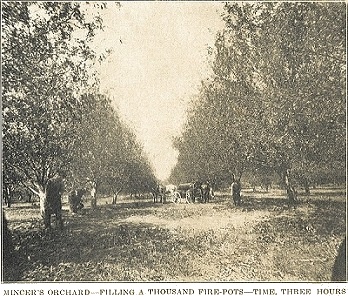  | ||
 | ||